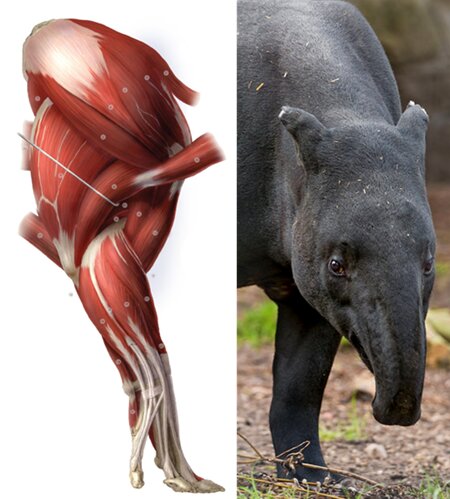
Promoter: Jamie MacLaren
Tapirs are an enigmatic clade of ungulates in the order Perissodactyls. Closely related to horses and rhinos, tapirs have a comparatively plesiomorphic body plan similar to the earliest perissodactyls, with four-toed front limbs, simple lophodont dentition, and have exhibited low rates of morphological evolution for many millions of years. Due to their similarity to ancestral horses in their general morphology, tapirs have been considered to represent a viable analogue for the locomotion and feeding of the earliest ancestors of some of the most charismatic mammals known, including modern horses and giant extinct rhinos.
Quantifying the locomotor anatomy of modern tapirs has the potential to provide vital inferences to understand how the musculoskeletal system of early horses and rhinos may have changed through the evolution of these other perissodactyl groups. To do this, detailed muscular information must be gathered from the limbs of modern tapir species.
In this project, the student will: (1) become familiar with the anatomy of the tapir forelimb and the mammalian forelimb muscles; (2) measure predetermined muscle architectural properties of the four extant species of tapir from 2D images provided; (3) assist in the collection of new muscle architectural data from at least one cadaveric limb of a modern tapir; (4) investigate the differences in muscle force and the range the muscle can stretch (excursion) across the four species of tapir; (5) contribute to a larger study on the evolution of perissodactyl forelimb musculoskeletal function.
Student: the successful student should be interested in evolution and the relationship between form and function; familiarity with mammalian biology would be beneficial, but not essential. Guidance in all methods and software will be provided – no prior knowledge is required. Familiarity with the R statistical environment and both univariate and multivariate statistics will be beneficial, but not essential. Willingness to take part in a tapir limb dissection (at UAntwerpen Vet Dept., under supervision) will be desirable, but not essential.
.